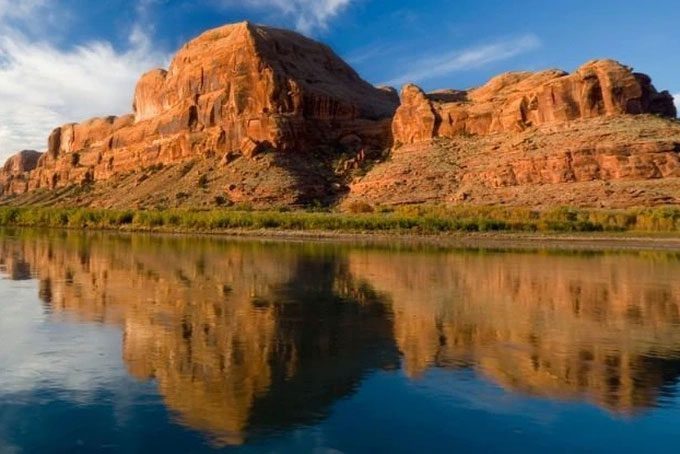The Deepest Groundwater Sources on Earth May Not Be as Ancient as We Think.
Based on samples taken from beneath the Colorado Plateau in the United States, scientists have discovered remnants of ancient seas that are foundational to many groundwater systems, which are not entirely isolated from the world above.
In their research to date the Paradox Basin, a region located between Colorado and Utah, scientists found that “young” water has seeped down to depths of up to 3 kilometers.

Deep underground, everything moves much faster than we think.
It is highly likely that the clean groundwater here is sourced from rain, melting snow, or newly formed aquifers from 400,000 to 1.1 million years ago.
Although this time frame may seem extensive by our standards, it is remarkably brief compared to the hundreds of millions of years that the remnants of seawater have existed at the bottom of the Paradox Basin.
So how can such a large volume of freshwater seep down so quickly and deeply? Geologist Grant Ferguson from the University of Saskatchewan, Canada, states that deep underground, everything moves much faster than we think.
The surprising findings of the research team are based on a special isotopic dating method capable of examining time scales much larger than those determined by radiocarbon dating.
The isotope used here is radioactive krypton-81, which has a longer half-life than carbon. Its half-life is particularly useful for estimating the age of water sources up to 1.2 million years.
When applying this technique to experiments with gas samples taken from depths of 500 meters to 2.7 kilometers, researchers found evidence of surface water. Specifically, the deepest water contained younger water, which diluted some of the older, saltier water. This occurrence is rare in other groundwater systems, but due to the unique topography of the Paradox Basin, surface water can easily seep down into the deep soil layers.
The research team explains that about 10 million years ago, the Colorado Plateau underwent a period of extensive erosion beneath the riverbed. Cracks became drainage pathways that allowed river water to penetrate deep underground, where high salinity remnants from ancient times are found in aquifers interspersed with salt deposits at the center of the groundwater system.
Researchers believe that the United States needs to be more cautious in managing groundwater systems here because if the Paradox Basin can be so easily disturbed, any pollutants from septic tanks, landfills, or agricultural land could quickly infiltrate the groundwater layer.
Currently, more than one-third of the area and nearly all farmers in the United States rely on groundwater for drinking water. Groundwater is extracted from wells and naturally seeps back into rivers and lakes on the surface.
If groundwater resources are exploited too rapidly, it will take a long time for these sources to recharge. Similarly, if pollutants seep into the water source, it will also take a significant amount of time for them to be diluted and reduced in concentration, while pollution is already a pressing issue. A 2015 study indicated that one in five groundwater samples in the U.S. contained contaminants from human activity or geological sources.
Researcher Ferguson suggests that we need to pay more attention to how we use underground resources, not just water but also oil, gas, and carbon storage, as this will undoubtedly impact the future. Until now, we have not truly examined these underground systems as thoroughly as we could or should.


















































